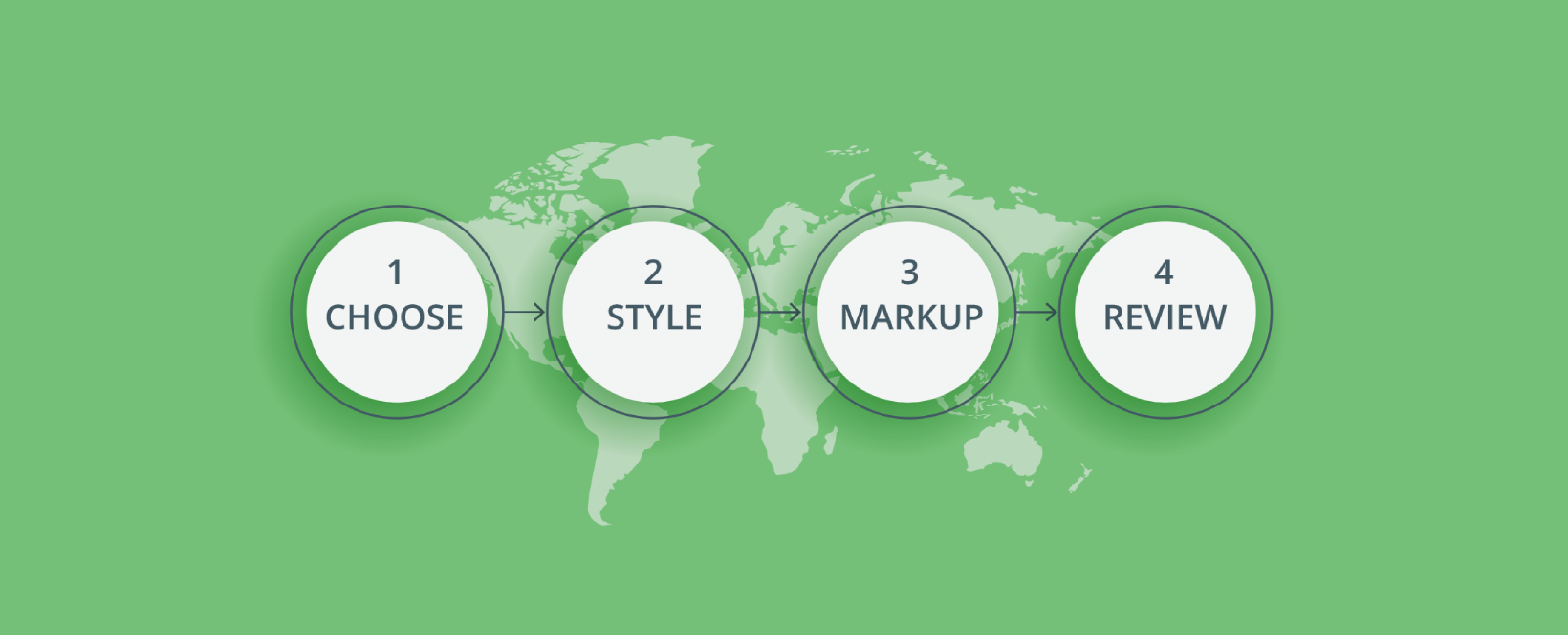Successful Automation
In Four Steps

Successful Automation
In Four Steps

Automating your document doesn’t need to be a daunting project, or take excessive amounts of time. In fact, once you break it down into small steps, it’s actually relatively easy. Here are four easy-to-follow steps to help you along the way:
Step 1: Choose your Content
When starting out on a new project, you want to be selective about the first documents and processes you choose to automate. You can choose a simple document, or one that has the most business impact, either way: choose content that brings good value from automation, and content that your SMEs are very familiar and comfortable with, so they can easily provide guidance during the automation process.
Step 2: Documents with style
It is essential to ensure that the documents that will be automated are prepared for automation. To make it easy to keep your original layout once you import it into your template builder, style your document. Create a Word document with all your company’s styles that you want to use in your templates (for numbered levels, unnumbered levels, bullets, … whatever you need). Assign each style to a text (clause) in this Word document (let’s call it a Style_library.docx). Create a new Template (eg. Style Library), import Style_library.docx with “Styles” and “Save imported Word as Advanced Layout Design” checked. The styling should be consistent across a suite of related documents if necessary, and should be reviewed beforehand to determine if multiple related documents may be logically combined into a single automated template.
Step 3: Markup
Once you have prepared your content, the next step is for the Subject Matter Expert to provide the markup to the Template Author. A markup includes the rules, instructions, and guidance of how a document’s automations operate. How documents are marked up will vary, but should always follow a predefined process that can be used by all the project participants. Generally, document automation tools will provide a markup process. Legito, for example, provides one that allows for data points to be marked up, giving a significant head start in the automated template creation process when importing a document, provided it is marked up correctly. You can either use an in-house markup plan that you develop with your SMEs, or create one yourself. Just make sure to document it so that those who come after you will be able to use it/update it easily.
Step 4: Review and Change Management
Once the markup has been provided, and the Template Author has created the template, the SME should review the automations and provide feedback. Allocate time for this SME review, and a clearly defined process put in place to manage change requests and the validation of updates. A best practice is to leverage an existing change management solution you have within your business. If you don’t have one, a simple spreadsheet in the cloud in solutions like Google Sheets, Excel in Office 365 or Smartsheet work well for collaboration on simple issue tracking. Finally, make sure to budget time for updates, and be prepared for company growth.
In planning your document automation project, you may have other business considerations and processes to put in place. Adapt to your specific needs and use these keys to success to have a great experience with your document automation solution and build your documents in a smarter way. You will love the results.
More Weekly Articles



















